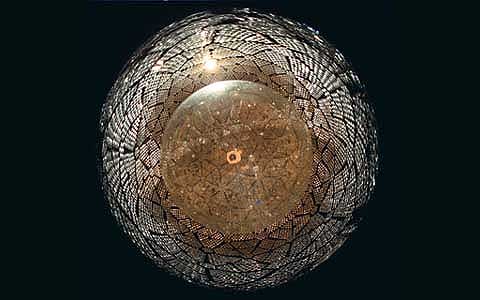
 |
 |
 A 12 meter wide acrylic vessel,
now filled with a thousand tons of heavy water, is at the core of the SNO experiment.
Surrounding the vessel, mounted on a geodesic steel support structure, are the
photomultiplier tubes which will record neutrino events. A 12 meter wide acrylic vessel,
now filled with a thousand tons of heavy water, is at the core of the SNO experiment.
Surrounding the vessel, mounted on a geodesic steel support structure, are the
photomultiplier tubes which will record neutrino events.
It may look like the eye of a giant reptile, but in fact it is an ambitious scientific experiment to unravel the mysteries of one of the most common yet most elusive particles in the universe—the neutrino. Built two kilometers under solid rock in a cavity the size of a 10 story building, the
Sudbury Neutrino Observatory (SNO) involves an international collaboration of 70
scientists from the U.S. (including Berkeley Lab), Canada, and Great Britain. Shielded
from interference with ubiquitous cosmic rays, the experiment will allow scientists to
observe the tiny bursts of light that take place when neutrinos collide with other
particles.
|